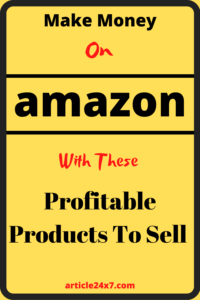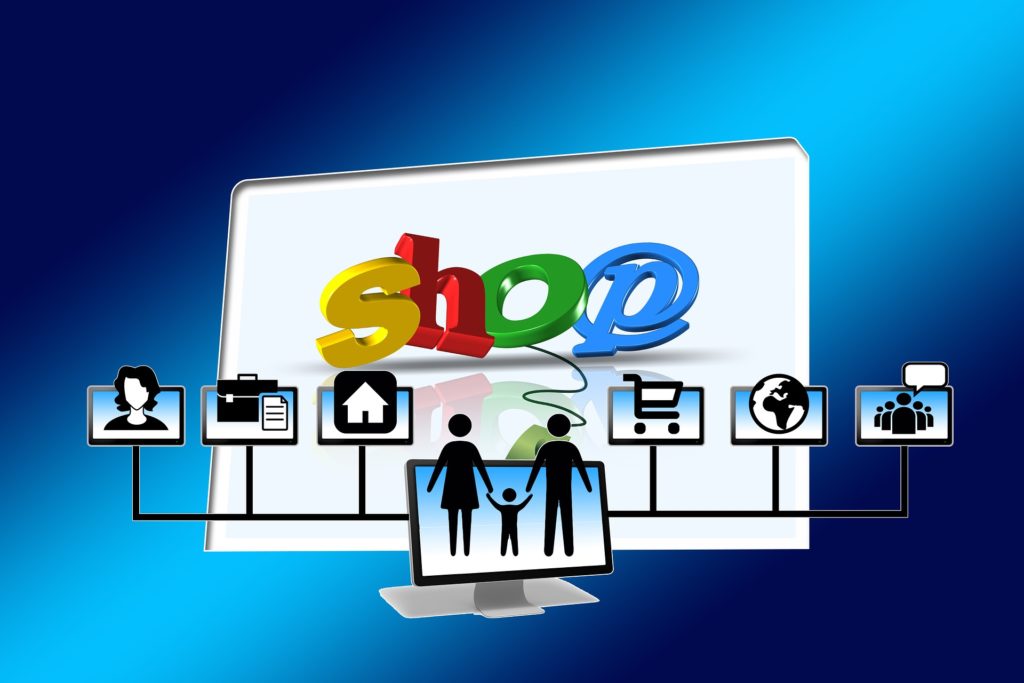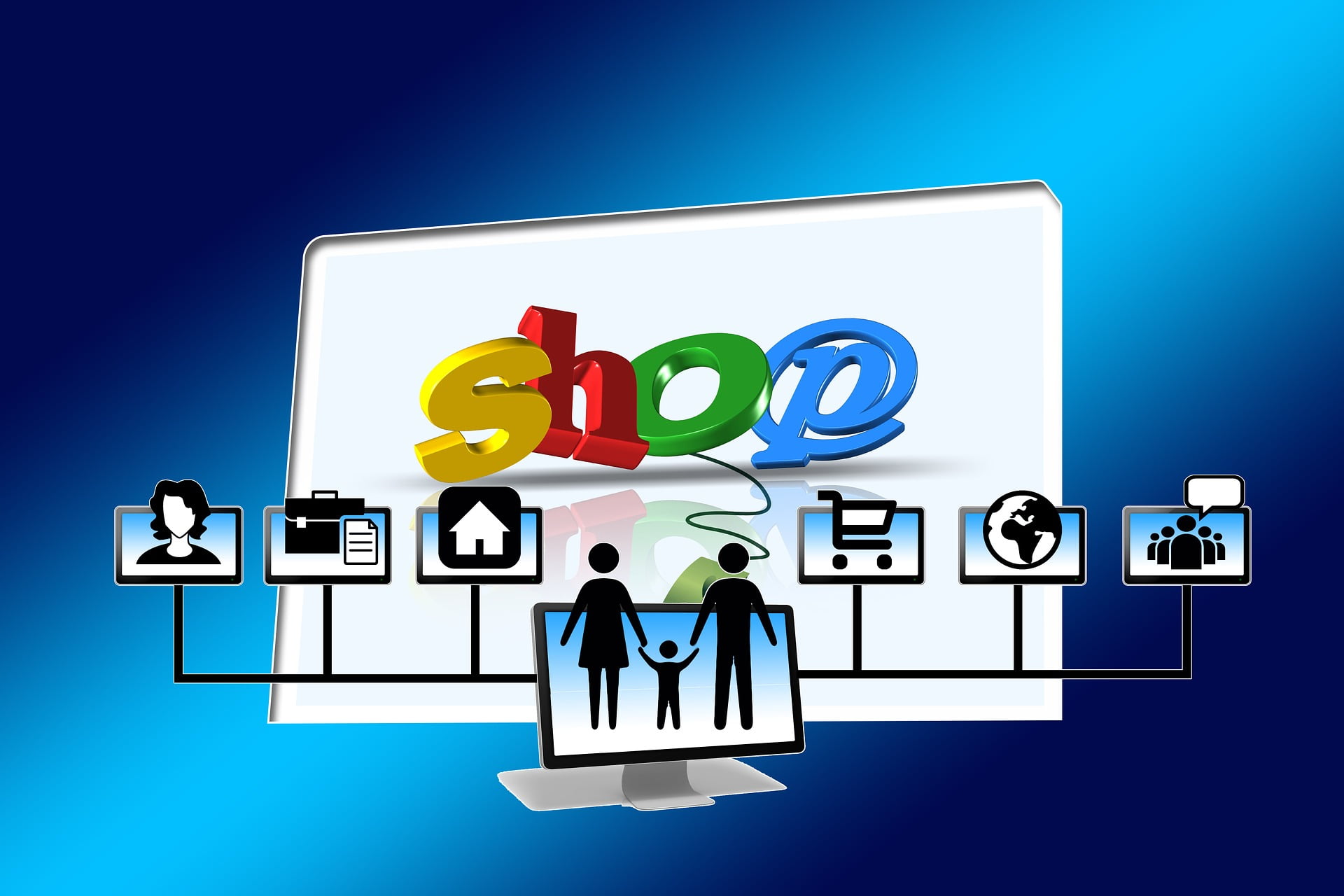Profitable Products To Sell On Amazon
By Richard Peck
The key word is profit – relatively simple to “sell” products (just sell smartphones or technology products), but your profit margins will be hideous.
What most people don’t realize is that the money you “collect” from business is just part of the story.
“Full” retail purchases provide a gross income. To determine the profit, you need to discount COGS (Cost of Goods Sold) and any extra “administrative” expenses, such as advertising, warehousing and staffing costs.
Whilst the allure of the “digital” realm has encouraged millions to foray into its depths, it is not unique. You still need to account for profit (bottom line) rather than overall gross (top line) in order to maintain your sanity (& viability).
The “online” business world closely mirrors its offline counterpart, which means that if you’re looking to take advantage of the plethora of opportunities created with the likes of Amazon, YouTube, etc – you’ll want to look at how they work… as “markets”.
YouTube is a market for entertainment, Twitter is a market for attention and Amazon is a market for commodity prices. Understanding this puts you in the advantageous position of being able to determine a more effective way to provide solutions to participants in said markets.

Supply/Demand…
The most important thing to appreciate that it’s all about supply & demand – the cornerstone of a “free market”.
Supply/Demand states that if there is demand, supply will surely follow… Over-supply brings “prices” down. Under-supply brings “prices” up.
The most important thing to consider is how demand is created/influenced.
Demand is the cornerstone of whether a “product” will sell, and is why the likes of “technology” products always do well online (because people want to ensure they’re getting the latest & greatest components).
Therefore, when considering what to “sell” on Amazon, you’re basically looking at which products have demand and are under-supplied. The supply situation may not by indicated by high prices, but people will generally either hold back on “non-essential” purchases, or ask for variations of provided solutions.
The important thing to consider is that most people are focused on “supply” (typically over-supply), such as you’d see from products which either have a lot of buyers or a lot of vendors (“smartphones” being a prime example).
By selling a “me-too” product, you may get sales but you’ll almost invariably have no profit. In my own experience in the “tech” space, profits are minimal because volume is so high. Contrast this with the likes of furniture where volume is relatively low, profits can be much higher.
The point is that the “price” you achieve on any of the modern platforms is heavily dependent on the quality and veracity of the solution, rather than whether other companies are already offering it.
Related Articles:
Online Traffic Strategies That Guarantees Floods Of Targeted Traffic
Best Items To Sell On Ebay In 2021
31 Sensational Small Business Ideas To Start In The New Year
47 Incredible Ways to Make Money Online

To this end, the following are some of the more effective solutions/products to sell through Amazon:
- ACCESSORIES For Popular Products
This works especially well for smartphones, computers and video consoles/games. If you find a popular product (especially game), you should be able to source complimentary accessories for it. iPhone cases were very good for this from between 2013 to 2015.
- CHEAP-To-Make Kickstarter Products
Kickstarter (crowd funding platform) is a goldmine for the inquisitive Amazon retailer. Not only do you have SPECIFIC listings of products which have been funded (and the actual data to support them), but you have a blueprint for products that a market will actually want. Some of the best categories for this are in the “creative” space – books and board games. Now, obviously the caveat here is to NOT rip-off the products in question – just use them as a point of observation of what you could buy/get made to compliment the demand they have PROVEN to exist.
- Boxed VIRTUAL Products
If you can get STEAM codes cheap, why not pay some money to get them boxed? What about if you found several “guides” doing well on ClickBank’s marketplace (there are a TON of game guides for the likes of World of Warcraft Gold etc on there)? A great trick is to find a virtual product that’s already selling and just make a physical copy. Obviously, you CANNOT rip-off the other product. If you don’t have anything of your own to add, just buy their book and rewrite it or something. The point is that you need to provide a unique offer to a new market – with demand ALREADY proven.
- Custom / Unique Products You Have Access To LOCALLY
One of the BIGGEST mistakes new sellers make with Amazon is basically just doing exactly the same as everyone else. They’ll even use the same “source” in China (via Alibaba of course). The best people are able to basically “source” their own products locally (or perhaps from their own suppliers) and then offer them as comparable products on the Amazon platform. For example, you may know a local clothing provider who’ll sell you cheap clothes (wholesale) – you’d be able to put them onto Amazon whilst targeting successful clothes that are on the platform already.
Notice all offerings above depend on there being very few other vendors in the market (whilst capitalizing on existing demand).
Whilst I believe the quality of a product is the most important thing, if you’re trying to make a penetration and don’t have resources/expertise to put into R&D, you’ll want to pick up any slack the market may have presently.
This is best done by playing the “demand arbitrage” game – providing products that have been proven in other markets, and offering an improved / comparable version through Amazon.

Alternative / Secret Trick…
To speak from my own experience, the whole supply/demand thing is legitimate for “commodity” products like technology components, clothes, food or generic medical solutions.
… BUT there is another way…
If you’re familiar with Maslow’s Hierarchy of Human Needs, the “price” quantifier is important for the stuff that people *need*, but don’t necessarily *want*.
In other words, if you’re playing on “level 1” (psychological) or “level 2” (safety) of the hierarchy, pricing is going to play a major role because people can get the same solutions from most vendors (just look at Android).
This can be seen in almost every market – whereby a company will only provide “cheap” prices due to the generic nature of their solutions. They don’t do much different, and thus end up attracting a fickle crowd (who are price sensitive).
Reality is different. Rather than being a slave to circumstance, the best work higher up the hierarchy – towards belonging (brands/communities), self-esteem (personal development/”big risk”) & self actualization (legacy).
By doing this, they transcend price (although cannot escape it) because of the perceived uniqueness of their offering (often termed “perceived value” in marketing).
They attract buyers who actually *want* to deal with them, and are happy to pay a fair price to take ownership of a solution whose benefit far outweighs its worldly (“tangible”) value.
This is where “premium” and “luxury” companies come from.
The secret is that markets respond to solutions. You take your wares to market, you don’t want to let the market rule you. The potency of your solution determines its demand.
The trick I’ve found works best is to go out and try big, bold experiments on your own and then provide the “solutions” you discovered as packaged products. This can be done both virtually and physically (through Amazon) – and what’s more, it’s entirely dependent on you… meaning that there should be very little by way of “competition” that can affect how successful the products are.
For example, say you’re interested in playing video games. You may like World of Tanks. Posting videos of WoT on YouTube is done by anyone with a capture card, so it’s not likely to give you a huge edge (although it will work quite well if you post good replays) – the real trick will come from running WoT tournaments which you post the results for on you website, YouTube and also through the likes of Twitch.
The part where Amazon plays into this is that it will give you the opportunity to sell the “SECRETS” to successful WoT gameplay, as well as premium vehicles and physical (boxed) versions of any “strategy” guides you created.
The key is that people who enjoy don’t really want to buy your stuff – they only want to get better at the game. Thus, what you’re “selling” is a way to do this.
You attract people by the quality of your replays/tournaments, and you’re able to then offer other products as a result they’re able to replicate.
Likewise with other solutions. Perhaps you went on a trip to Tuscany and found some special clothing pieces, or you took your programming skills and created a custom web based application for users who wanted to enjoy the underlying way in which certain things work. The possibilities are limitless.
Remember, though, the KEY is to have people willing to PAY for the usage of the items you’re offering. Most make the mistake of selling the product – people want the SOLUTION (“results”). They don’t buy acne cream because it’s “natural” – they buy it to get rid of acne… the idea that it’s “natural” is a by-product of this underlying purpose.
Article Source: https://EzineArticles.com/expert/Richard_Peck/2344303

